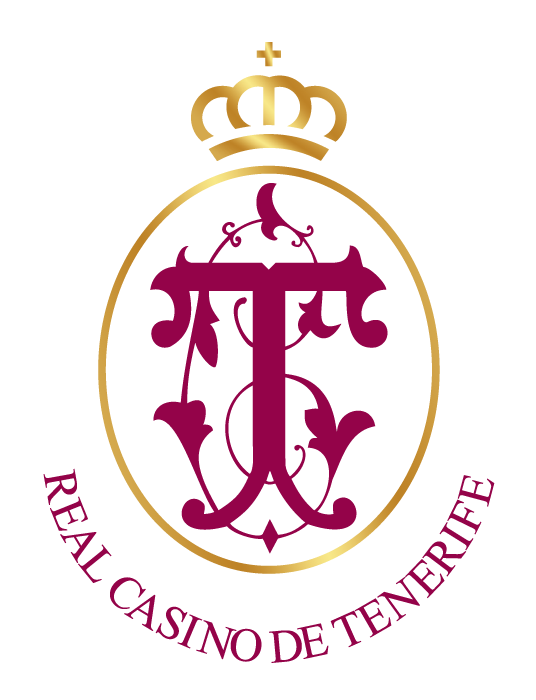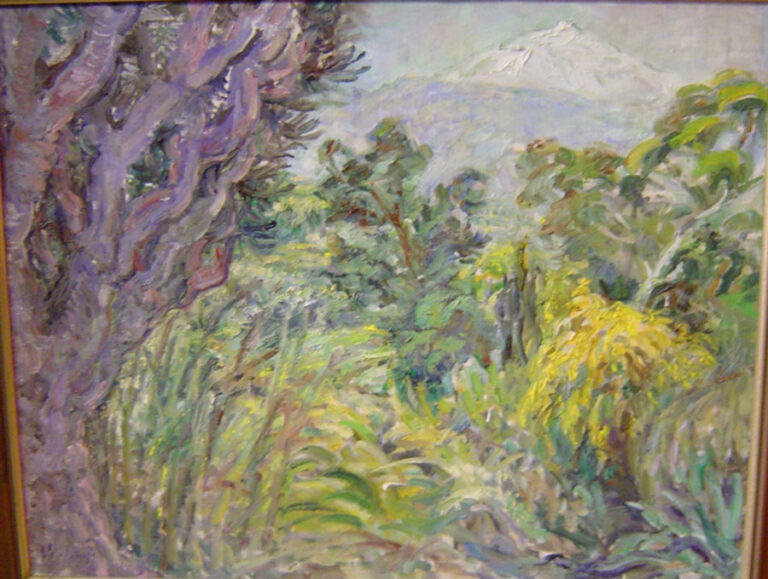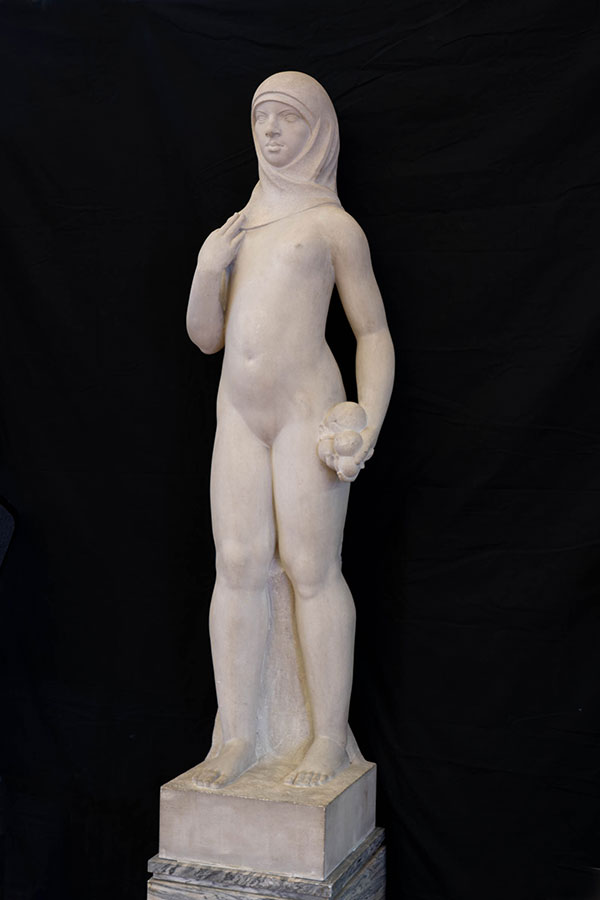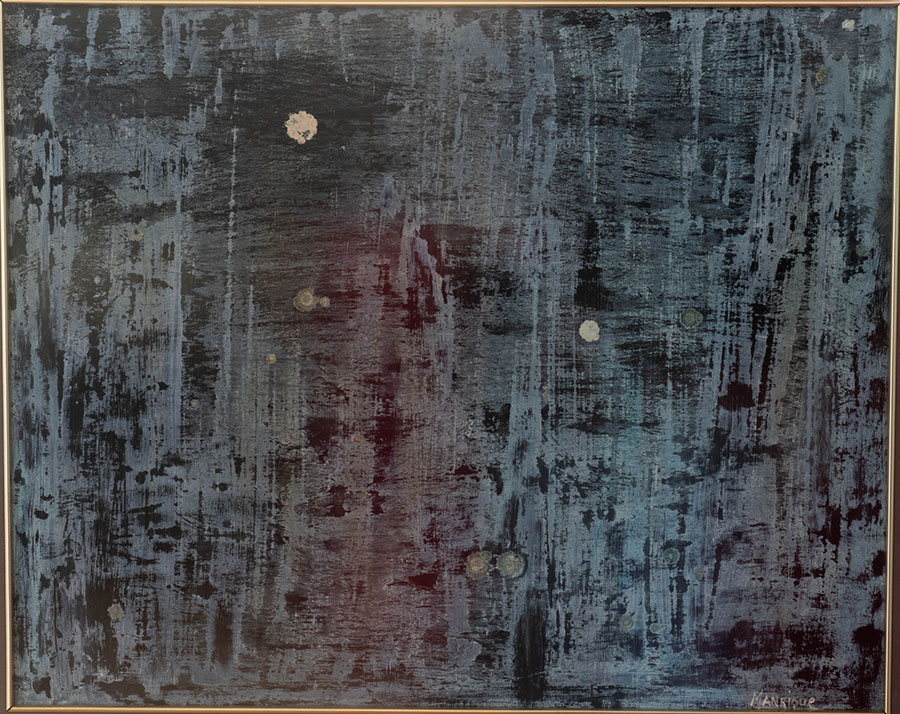
- Type of work: Easel painting
- Technique: Oil on canvas
- Approximate dimensions: 59 x 69 cm
- Subject: Landscape
- Title: Landscape with Teide in the background
- Author: Vicki Penfold (*1918)
- Chronology or Year: Last third of the century. XX
- Artistic-historical analysis: Style: Expressionism
Description: It is the visual framing of a natural landscape, painted a plein air, where eliminated the detail and all descriptive character, it is resolved in a synthesis of the same. Built with color, in a strong and explosive chromatism dominated by yellow, the stage is reduced to the plastic representation of light and color, transforming matter into pure energy and the line into a vehicle of expression. Captured with emotion and expressed by the emotional charge of the color itself, it is a landscape subjectivized by the artist who projects his interiority in the external image, of overwhelming grandeur, of the natural landscape with the Teide in the background.
Date received: In 1979, donated by the artist on the occasion of the solo exhibition held in this entity from May 4 to 19 of that year.
Remarks: In 1979 Vicki Penfold also participated in a collective exhibition at the Centro Cultual “Unión y Fraternidad” of La Guancha, inaugurated on November 17 by Luis Ortega Abrahan; among the works presented was an oil painting with the title Blue liliesprobably similar to the still life with lilies that also appears in the Casino collection.
About the author: Born in 1918 in Krakow, Poland, with the family name of Victoria Sandberg, she began drawing at the age of 9 at the Hohenzollern Oberlyceum school in Berlin, where she went to live with her sister after the early death of her mother, and which she left shortly after Hitler came to power. Back in Poland, he enters the Institute of Plastic Arts in Krakow at the age of 15, where he learns different techniques, choosing to specialize in painting under the instruction of Professor Homolacz, from whom he learns that each brushstroke must be a reflection of the artist’s personality. After finishing his studies in the summer of 1939, he suffered the consequences of the division of Poland at the beginning of the Second World War when he was on vacation in the city of Lwon, in the east of the country, an area that remained under Russian rule. At the age of 21, victim of political events, she began the hardest stage of her life, from the loss of freedom and forced labor in the Altenais camp in Siberia, condemned to cut down trees in extreme climatic, disease and subsistence conditions, to the abandonment of Russia – thanks to the pact with Great Britain and the support of this power in the liberation of political prisoners free of blood crimes – crossing the whole country in subhuman conditions, until arriving in Teheran, continuing to Basra, Bombay and finally Bombasa, where she is received by the English in a Polish refugee camp in the city of Arusha, in Tanganyika. Strengthened by all these events, this vitalist woman who used all available resources to get ahead – her knowledge of English allowed her to work as a translator in the first moments of freedom – now begins her first stage of artistic production in Africa, subjugated by the beauty of nature and with the freedom to enjoy it. She married in 1943 with the agricultural landowner Frantz Pauli Hvas and the year after the birth of her first child, she held her first exhibition in 1945, soon becoming the driving force behind the young local artists with whom she organized the Arts and Crafts Society in the Salon des Refusés, after her work was not admitted to an official exhibition organized by the Government of Nairobi due to its excessive modernity. The success obtained makes her the most requested painter to paint the portraits of the most important people of the moment and so she is commissioned to paint the King of Buganda, the King of Tanganyika or the Caliph Bin Harub, Sultan of Zanzibar. The product of his work in this sultanate, not only for the royal portrait but for many other commissions, allows him to make a training trip to Europe in 1952, through sculpture classes in the workshop of Sean Crampton in London, or copying Rembrandt at the Louvre Museum, as well as establishing connections with European galleries. As a result of this visit, in which she was accompanied by her second husband Harry Penfold, she participated in the Summer Salon of the Royal Institute Galleries in London, in May 1952. In 1954, she began a life together with this engineer and photographer, for whose work they left Africa for six years, settling first in Cyprus, then in Istanbul and Tel Aviv, where she gave birth to her daughter Lyn Penfold in 1959, returning to the African continent this time only for a short period between 1960 and 1961, the second African stage in her production. In 1962 he is living in Paris, where he marries Penfold and exhibits in the most renowned galleries. His desire for self-improvement led him to enroll in 1963 at the School of Vision in Salzburg, where Oscar Kokoschka taught his classes to a very select and small group of students, one of the most enriching experiences of his training.
The search for a peaceful place to settle down definitively leads him to the choice of Tenerife after the recommendation of an Algerian photographer friend. In 1964 she was already settled with her husband and daughter in Tacoronte and with an atelier in the style of the free Parisian academies, where together with other artists she worked the nude in life, making herself known with great success in the exhibition at the Círculo de Bellas Artes in Santa Cruz de Tenerife in November of that year. His friendship with the sculptor Belén Morales was fundamental for his incorporation into the most avant-garde currents of the island, so that from the end of November of that same year he participated in the exhibitions of the group Nuestro Arte held at the Municipal Museum of Fine Arts also the following year, without ceasing to exhibit individually in other institutions of the island or in group exhibitions such as “12”, relating to the most important intellectuals of the moment, many of whom were reflected in his portraits. Now permanently settled in Puerto de la Cruz, her work, not only shown in the islands, continues to be exhibited periodically in European art centers and galleries, such as the Royal Society of Portrait Painters in London, or the gallery of the Milton Hotel in Rotterdam, or the Castle of Mainau and the Bürgerhaus of Sprendinglen in Germany in 1995, where she had already exhibited in Hannover in 1985. For this reason, in 1966 she was named Corresponding Member of the Royal Society of Arts of London, 22 years ahead of her entry into the Royal Academy of Fine Arts of San Miguel Arcángel in 1988, as well as the distinction of Member of Merit granted by the Agrupación de Acuarelistas Canarios (Association of Canarian Watercolorists) in 1996. In 2004 an anthological exhibition was held at the San Felipe Castle, Sala Eduardo Westerdahl of the Instituto de Estudios Hispánicos de Canarias and Sala de Arte Caja Canarias in Puerto de la Cruz, a municipality that awarded her the title of Adopted Daughter for her work in 2004.
unanimously by all the political groups, while receiving the “Island Award” by the newspaper La Opinón. He continues to live in his house in La Asomada in the northern town and to work on a coherent work where there is no separation between the space of life and the space of the painting.
Bibliography:
Casino Archives. Act J D. May 19, 1979.
Álvaro RUIZ RODRÍGUEZ: Vicki Penfold. Viceconsejería de Cultura y Deportes, Government of the Canary Islands, Santa Cruz de Tenerife, 2006.





